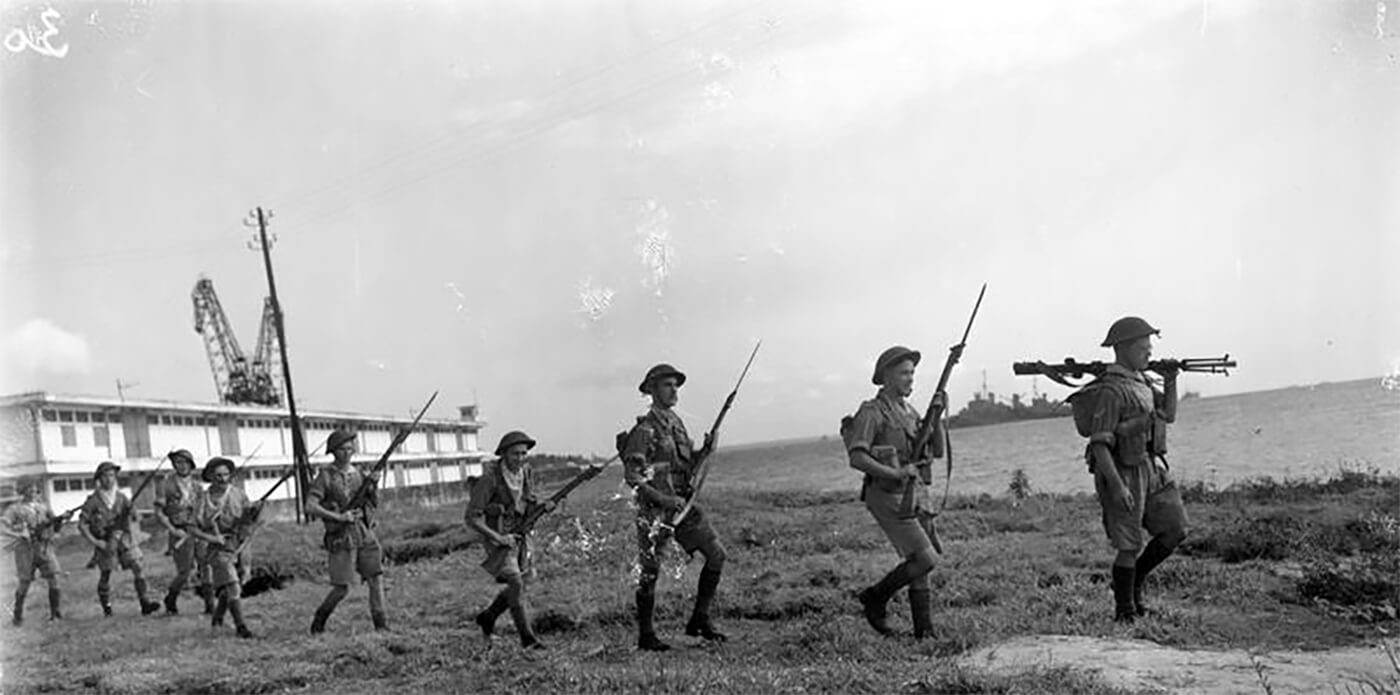| Special Forces Operations in May 1942 |
| April 29th, 1942 – May 24th, 1942 |
| Operazione Golfo di Alessandria 4 |
| Xa Flottiglia MAS |
| After the December 1941 attack on HMS Valiant and HMS Queen Elizabeth, Italian forces launch another strike on Alexandria Harbour. The submarine Ambra, under Mario Arillo, transports Xa Flottiglia MAS operatives with Siluri a Lenta Corsa (SLCs) to target the floating dock, H.M.S. Queen Elizabeth, and H.M.S. Medway. Ambra departs La Spezia on April 29th, 1942, reaching Alexandria by May 13th, 1942. An unexpected current shifts its position 2.5 kilometres off course, disrupting the mission. British patrols detect activity, deploying searchlights and depth charges. All three SLC teams fail due to navigational errors, mechanical issues, and strong defences. The operatives scuttle their devices but are all captured by May 15th, 1942. Ambra returns to La Spezia on May 24th, 1943, covering 3,602.9 nautical miles, but the mission is unsuccessful. For their courage during the operation, Mario Arillo earns the Medaglia d’Argento al Valore Militare, Egil Chersi receives the Medaglia di Bronzo al Valore Militare, and all six captured operatives are awarded the Medaglia d’Argento al Valore Militare. |
| May 1942 – September 8th, 1943 |
| Crimean Deployment, VII Flottiglia MAS |
| Xa Flottiglia MAS |
| During World War II, impressed by Italian successes with assault craft in the Mediterranean, Großadmiral Erich Raeder of the Kriegsmarine formally requests Italian naval support in the Black Sea on January 14th, 1942. This marks the only occasion between 1940 and 1943 that Germany seeks direct Italian military assistance. From April 1942, Italy deploys Xa Flottiglia MAS and other Regia Marina units to support German and Romanian operations against the Soviet fleet. Due to Turkish neutrality, Italian vessels travel overland by rail and are reassembled in Constanța, Romania. Their primary mission focuses on disrupting Soviet supply lines, protecting Axis convoys, and engaging enemy vessels. The Italian contingent consists of five CB-class midget submarines, six MAS torpedo boats, five MTSM and five MTM explosive motorboats, with a total of 80 personnel. Additional forces engage in convoy protection and anti-submarine warfare. The 101ª Squadriglia Mezzi Speciali, initially commanded by Lieutenant Commander Aldo Lenzi and later by Lieutenant Commander Salvatore Todaro and Lieutenant Roberto Romano, operates under VII Flottiglia MAS, led by Capitano di Fregata Francesco Mimbelli. Italian forces integrate with German and Romanian units and conduct extensive naval operations until early 1943. In April 1942, Italian MAS torpedo boats and CB submarines arrive in the Black Sea after an arduous transport process from Venice via Vienna to Constanța. Between June and August 1942, Italian forces launch torpedo attacks on Soviet warships, successfully damaging or sinking enemy vessels, including the Soviet submarine ShCh-203 on June 13th, 1942 and the cruiser Molotov on August 3rd, 1942. Italian MAS boats and submarines conduct over 140 missions, engaging Soviet convoys, laying mines, and supporting German and Romanian naval forces. Soviet fighter-bombers heavily target Italian naval bases, sinking multiple vessels, including MAS 571 on September 9th, 1942 and MAS 572 on May 12th, 1943 after a collision. Italian units continue engagements off Yalta and Novorossiysk, but Axis defeats force a gradual withdrawal from the region by mid-1943. By early 1943, due to increasing Soviet offensives, Italian naval operations decline. On May 20th, 1943, the remaining vessels transfer to the Kriegsmarine. After Italy’s armistice in September 1943, German forces seize the surviving Italian CB submarines and later hand them over to the Romanian Navy. Following Romania’s defection in 1944, the Soviets capture and scrap most of these vessels. Despite its limited numbers, the Italian Black Sea deployment demonstrates Xa Flottiglia MAS expertise in small-scale naval warfare, with notable successes in sinking Soviet vessels and disrupting enemy operations. Several Italian servicemen receive high military honours for their bravery, including the Medaglia d’Argento al Valore Militare and Medaglia di Bronzo al Valore Militare. However, their overall impact remains minor, as the Soviet fleet retains superiority, and Axis forces struggle to maintain control in the Black Sea beyond 1943. |
| May 5th, 1942 – October 1942 |
| Operation Ironclad |
| Commandos |
| No. 5 Commando. Their mission is to land ahead of the main force and carry out a raid on a French coastal artillery battery near Courrier and Ambarata Bays on the northern tip of the island eighteen kilometres to the west of Diego Suarez, Madagascar. After that they have to stand by for further assignments. The Commandos complete their missions successfully and stay in Madagascar until October, after which the unit returns to Great Britain. |
| May 23rd, 1942 – June 4th, 1942 |
| Operation Bristle |
| Commandos |
| 250 men from No. 1 Commando. Their mission is performing a beach reconnaissance, to remove or destroy the Radio Direction Finding apparatus and bring parts of it back along with captured enemy technical personnel, in the area North of Plage Saint Cecily in France. |
| April 29th, 1942 – May 24th, 1942 |
| Operazione Golfo di Alessandria 4 |
| Xa Flottiglia MAS |
| After the December 1941 attack on HMS Valiant and HMS Queen Elizabeth, Italian forces launch another strike on Alexandria Harbour. The submarine Ambra, under Mario Arillo, transports Xa Flottiglia MAS operatives with Siluri a Lenta Corsa (SLCs) to target the floating dock, H.M.S. Queen Elizabeth, and H.M.S. Medway. Ambra departs La Spezia on April 29th, 1942, reaching Alexandria by May 13th, 1942. An unexpected current shifts its position 2.5 kilometres off course, disrupting the mission. British patrols detect activity, deploying searchlights and depth charges. All three SLC teams fail due to navigational errors, mechanical issues, and strong defences. The operatives scuttle their devices but are all captured by May 15th, 1942. Ambra returns to La Spezia on 24 May, covering 3,602.9 nautical miles, but the mission is unsuccessful. For their courage during the operation, Mario Arillo earns the Medaglia d’Argento al Valore Militare, Egil Chersi receives the Medaglia di Bronzo al Valore Militare, and all six captured operatives are awarded the Medaglia d’Argento al Valore Militare. |
| May 31st, 1942 – June 1st, 1942 |
| Operation Foxrock |
| Commandos |
| Hundred men of No. 12 Commando. Their mission is to destroy the entrance to the Somme Canal and other installations at St Valéry sur Somme, France. This operation is planned after the success of Operation Chariot against the Normandie Dock in Saint Nazaire, France. The operation is abandoned when the convoy taking the assault force to France is spotted by a German patrol vessel. |

